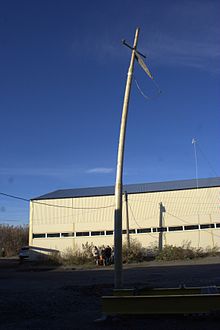

Structural testing is the evaluation of an object (which might be an assembly of objects) to ascertain its characteristics of physical strength. Testing includes evaluating compressive strength, shear strength, tensile strength, all of which may be conducted to failure or to some satisfactory margin of safety. Evaluations may also be indirect, using techniques such as x-ray ultrasound, and ground-penetrating radar, among others, to assess the quality of the object.
Structural engineers conduct structural testing to evaluate material suitability for a particular application and to evaluate the capacity of existing structures to withstand foreseeable loads.
Items may include buildings (or components), bridges, airplane wings or other types of structures.
See also
References
- "Structural Testing" (PDF). NASA Johnson Space Flight Center. 2011.
- Bransby-Zachary, Charles; Crevello, Gina L. (2016-09-01). "Ground Penetrating Radar for Use on Concrete Structures". STRUCTURE Magazine.
{{cite journal}}: CS1 maint: date and year (link) - Groth, C (2018). "Structural validation of a realistic wing structure: the RIBES test Structural validation of a realistic wing structure: the RIBES test". Procedia Structural Integrity, AIAS 2018 International Conference on Stress Analysis. 12: 448–456. doi:10.1016/j.prostr.2018.11.073. hdl:11573/1262267. Retrieved 11 September 2022.
This engineering-related article is a stub. You can help Misplaced Pages by expanding it. |